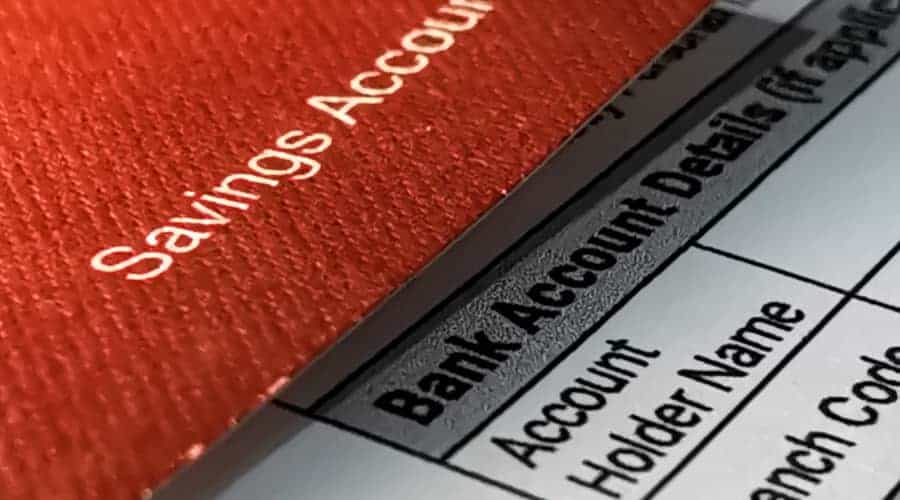When it comes to using ISAs (Individual Savings Accounts) in the UK, it can be a real minefield trying to work out what type of ISAs you can open each year and which of them you are able to pay into without breaking the rules.
You can use your £20,000 ISA allowance across multiple ISA types e.g. stocks & shares ISA, cash ISA and LISA. However, you can not invest in more than one single type of ISA in the same tax year e.g. two stocks & shares ISAs with different providers. You can only open one of each type of ISA each year.
If you are in a position where you are just starting to use ISAs to save and invest your money, the following post should cover all the key questions you may have about these complicated (but essential) products.
Can you pay into two ISAs in the same tax year?
You can pay into two ISAs in the same tax year provided they are different types of ISA. It would be fine to pay into both a cash ISA and a Stocks & Shares ISA in one tax year as long as you’re below the £20,000 limit. You would not be able to pay into two different ISAs of the same type, however.
There are also rules concerning which type of ISA you are able to open over a tax year (6th April to 5th April the following year). You are able to open one ISA in each category (Cash, Stocks & Shares, Lifetime etc) in each tax year but you would not be allowed to open two cash ISAs in one year with two different providers.
A simple way of remembering what you are and aren’t allowed to open and pay into when it comes to ISAs is to remember the following two facts:
- I must not pay more than £20,000 in total into my various ISAs.
- I can only open and pay into one of each category of ISA during the tax year.
For those of you still with me, you’re probably wondering how exactly to get started and open your ISA.
For a Stocks and Shares ISA – check out my post on opening an ISA with Vanguard.
For guidance on opening and choosing a Cash ISA – check out this resource by MoneySavingExpert.

What are the different types of ISA available?
The following ISAs (individual savings accounts) are available in the UK; Cash ISA, Stocks and Shares ISA, Lifetime ISA, Innovative Finance ISA and the Junior ISA. Each one is a tax-advantaged account that prevents any gains or returns from being taxed with each providing unique benefits.
Looking at each in turn …
A cash ISA is simply a place to save your money whilst earning interest. As it is an ISA, any growth due to this interest is not subject to tax. There are many types of cash ISA available offering different levels of interest. As interest rates are low, do not expect high returns on your money in this account type.
A Stocks & Shares ISA allows you to invest your money in the stock market via individual stocks, bonds or mixed funds. Any growth associated with these investments including any dividends earned is not subject to tax whilst in this account. This ISA should be reserved for longer-term investing.
A Lifetime ISA (LISA) is an ISA geared towards saving for a first home or for retirement. You can invest up to £4k in a LISA and the government tops up your contributions by 25% (so £1k if you invest up to the £4k limit). There are penalties if the money isn’t used for the listed purposes.
An Innovative Finance ISA is the least commonly used ISA which invests in peer-to-peer lending whereby a service brings individual lenders and borrowers together rather than loans being through a financial institution as is typical. This ISA type should be considered a higher risk.
A Junior ISA is a product that allows parents and guardians to invest for their children up to £9,000 per child per year. Once the child reaches 18 years old, the money is legally theirs to do with as they please. The £9,000 ISA allowance is separate from the general £20,000 ISA allowance.
Can I pay into different ISA types in the same year e.g. stocks ISA and cash ISA?
You can pay into different ISA types e.g. a Stocks & Shares ISA and a Cash ISA in the same year as long as the total contributions across the different ISAs remain below the £20,000 per year limit. It is perfectly acceptable to open multiple ISAs in different ISA categories in the same year.
It is perfectly allowable to invest in multiple different ISA types (Cash, S&S, LISA) in the same year and for those taking advantage of the LISA whereby you can contribute up to £4,000 per year and the government provides a 25% (£1,000 match) this should form part of your strategy.
In this case, I would invest my first £4,000 into a LISA to take advantage of the government’s 25% match. I would then use my remaining £16,000 contribution limit (£20k – £4k) to invest in a Stocks & Shares ISA. I would invest within both wrappers into a broad, low-cost index fund.
Whilst it varies by person, this strategy is, in my view, most likely to provide the best returns with the interest earned in a Cash ISAs not even keeping up with the erosive powers of inflation.
Can I open two different Stocks and Shares ISAs?
You cannot open two different Stocks & Shares ISAs in the same tax year. You are only able to open and contribute to one ISA of each ISA category each year. Similarly, you cannot contribute to two different Stocks & Shares ISAs in the same tax year held on two different platforms.
To put it simply, never open more than one Stocks and Shares ISA in each tax year (April to April) and never contribute money to more than one Stocks and Shares ISA in a tax year.
What is the annual ISA limit and is that limit across all of my ISAs?
The annual ISA limit is £20,000 per tax year. This limit is applicable in total across all of your contributions to your various ISAs including Cash ISAs and Stocks & Shares ISAs over the tax year. There is a separate £9,000 per child, per year limit for Junior ISA (JISA) contributions.
As I laid out in my recent post on where to invest once you have maxed out your ISA – investors should prioritise making full use of their employer pension contribution match (if they are employed) and utilising their full ISA allowance.
Unlike other investment accounts like pensions, the ISA provides a nice mix of being tax-advantaged (not liable to capital gains tax) and flexible (you can cash out your ISA investments very fast without suffering penalties).
Interestingly, the Junior ISA contribution limit of £9,000 per child per year is separate from the general £20,000 ISA contribution limit. So, if you are able to invest large amounts each year, investing in your children or grandchildren’s Junior ISAs is one way of avoiding future capital gains tax, even if it means effectively giving your money to family members.
What will happen if I pay into two ISAs in the same year?
If you pay into two different ISAs within the same ISA category you will need to call the ISA helpline to fix the mistake. It’s rare that honest mistakes like these will be punished, however, somebody taking advantage of the system on purpose may face HMRC scrutiny.
Paying into two different Cash ISAs or two different Stocks & Shares ISAs in the same year is an easy mistake to make. Let’s say you had a long-standing S&S ISA with Hargreaves Lansdown that you happened to invest a bit into on the 15th of April.
Later that year, in December, you hear Vanguard are now offering a very attractive Stocks & Shares ISA so open an account on this platform and invest in this ISA, completely forgetting you invested in your original ISA 8 months ago.
Clearly, mistakes like this must happen and everyone that does so isn’t put into jail or handed a punitive fine.
In most cases, once the error is realised, you can call the ISA helpline (0300 200 3300). This helpline will then suggest a course of action to fix the error.
Only those who are clearly abusing the ISA system by opening and paying into numerous different ISAs in the same tax year will suffer HMRC scrutiny and possible fines.
Should I open a stocks & shares ISA or a cash ISA?
Whether to open a Cash ISA or a Stocks & Shares ISA is a personal choice. The Stocks & Shares ISA is generally considered a higher risk but higher likely reward strategy due to the volatility of investing in the stock market. For long-term investors, the Stocks & Shares ISA is the better choice.
My view is that the Stocks & Shares ISA and Lifetime ISA are both truly great products to invest your money in. The Stocks & Shares ISA prevents capital gains from being taxed which is a genuine risk when your investment account grows large enough and you start to ‘realise’ some of the gains by selling assets to fund a purchase.
Similarly, a Lifetime ISA comes with a 25% government top-up which is as close to “free money” as there is.
I’ve never really seen the appeal of a Cash ISA, the likelihood of the tiny interest rates producing large enough returns to ever be taxed seems minimal and most people would be better off investing their money in a Stocks & Shares ISA to prevent their money from being eaten away by inflation in a cash account.
The crucial thing with a Stocks & Shares ISA is where you invest your money inside this tax-advantaged wrapper. My guidance, as always, is to invest in a low-cost, broad index fund like a global tracker or the S&P500 tracker.
Investing in individual stocks you feel will go up or trying to time the peaks and troughs of a market has been a historically poor investing strategy for the majority of people.

Should I move my investments outside of an ISA to within an ISA?
If you hold investments outside of an ISA and you have not yet exceeded your ISA contribution limit, it does make sense to sell your investments and then repurchase them within the ISA. Just be careful not to sell to the extent where your capital gain exceeds the capital gains minimum allowance.
At the time of writing, the capital gains tax allowance is £12,300. That means you can sell as many investments held outside of your ISA as you like provided the gain between what you sell these assets for and what you bought them for originally doesn’t exceed this amount. This way, you will not be liable to pay any capital gains tax.
These investments can be repurchased within the ISA wrapper to prevent being liable for any future tax on any capital gains on these investments.
If following this strategy, be sure that you’re not using up your capital gains tax allowance without considering other capital gains you may incur in the year.
Can I use my spouse’s annual ISA limit if they aren’t using it?
You cannot use your spouse’s or anybody else’s annual ISA limit if they aren’t using it. However, there is nothing stopping one-half of a married couple from transferring the other half £20,000 to invest in their ISA. The money would stay in the marriage and be protected from future tax liability.
Generally speaking, it is not possible to use somebody else’s ISA limit of £20,000 per year just because they are not using it. Even if you contribute your £20,000 and your wife or mother or best friend has their whole limit left, you can not use it.
However, there is nothing stopping family members from sharing their money with each other and using up each of their £20,000 ISA limits to keep as much of the family invested money free from future capital gains taxes.
Can I transfer money from my ISA to my partner’s ISA?
You can not transfer money from your ISA to your partner’s ISA without it counting towards the annual contribution limit. To do this you would have to sell the assets in your ISA and repurchase them within your partner’s ISA. However, this would still use up the annual £20,000 contribution limit.
As always, please remember I am an Accountant, but not your Accountant. In this post (and all of my others) I share information and oftentimes give anecdotes about what has worked well for me. However, I do not know your personal financial situation and so do not offer individual financial advice. If you are unsure of a particular financial subject, please hire a qualified financial advisor to guide you.
This article has been written by Luke Girling, ACA – a qualified Accountant and personal finance enthusiast in the UK. Please visit my ‘About‘ page for more information. To verify my ACA credentials – please search for my name at the ICAEW member finder. Please comment below or contact me here to get in touch with questions or ideas for future posts.
